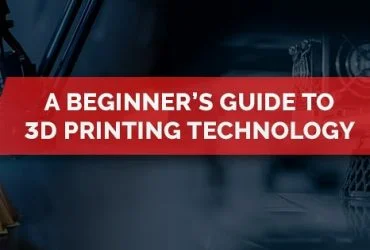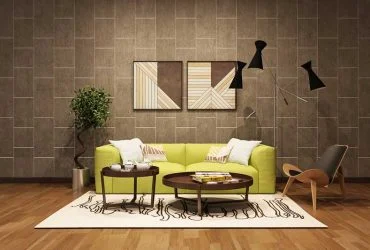Why Real-Time Rendering Technology Matters for Architectural Visualization?
Have you ever wished you could walk through a building before it’s even built? Imagine experiencing every detail, texture, and light reflection instantly—just like being there in person. This cutting-edge technology is transforming how architects, designers, and clients collaborate.
It’s no longer just about eye-catching visuals; it’s about accelerating decision-making and enhancing accuracy in every phase of a project. With real-time rendering, the ability to view and interact with designs on the spot is revolutionizing the architectural space. In this blog, we’ll explore why this innovation is becoming a must-have tool in modern design workflows.

What is Real-Time Rendering?
It refers to the process of generating and displaying images at a speed fast enough to appear instantaneous to the human eye—typically 30 frames per second or more. This is in contrast to traditional rendering methods, which can take hours to process a single high-quality frame.
In the world of architectural visualization, this means that stakeholders can interact with digital building models dynamically, adjusting views, lighting, materials, and even structural elements in real-time.
Key Advances in Real-Time Rendering for Architectural Visualization
-
Ray Tracing and Real-Time Global Illumination
Ray tracing has long been associated with film-quality graphics. But thanks to hardware acceleration and software advancements, it has now found a home in real-time engines. Paired with global illumination techniques, ray tracing allows for natural light behavior, accurate reflections, and refined shadows—all critical elements for architectural designs.
When applied in architectural visualization, real-time ray tracing delivers photorealistic effects that were once reserved for offline rendering workflows. This level of realism is crucial in helping clients understand spatial relationships and lighting conditions as they would appear in reality.
Benefits
- Accurate simulation of light bounce, soft shadows, and color bleeding in real-time.
- Enhanced realism, helping clients better visualize finished environments.
- Eliminates the need for baking lighting, speeding up design iterations.
- Improves design communication between architects and stakeholders.
- Reduces the likelihood of costly design revisions post-construction.
-
Virtual Reality (VR) and Immersive Experiences
With the integration of VR, architectural visualization has moved beyond screens and into fully immersive environments. Real-time engines power these virtual spaces, allowing users to walk through digital models as though they were physically present.
In this immersive format, clients and design teams can engage with projects on an emotional and spatial level, something traditional blueprints or renderings can't achieve. This technology is especially useful for pre-sale presentations, client walkthroughs, and spatial planning.
Benefits
- Offers lifelike walkthroughs for better spatial understanding.
- Helps spot design flaws that may be missed in 2D/3D views.
- Engages clients and investors with high-impact visual storytelling.
- Enhances collaboration by allowing real-time feedback inside the model.
- Reduces the need for physical mockups or scale models.
-
Real-Time Rendering with Photorealistic Materials
Integrating physically-based rendering (PBR) materials into real-time rendering pipelines has raised the visual bar significantly. PBR ensures materials like concrete, glass, wood, and metal react to light in a way that mimics real-world physics.
This realism is crucial in 3D architectural rendering services where every surface detail can impact a design’s aesthetics and functionality. Real-time adjustments to these materials provide instant visual feedback, enabling quick material swaps and refinements without re-rendering the scene.
Benefits
- Increases realism with physically accurate textures and reflections.
- Allows for instant preview of different material combinations.
- Saves time by avoiding lengthy offline re-renders.
- Enhances presentation quality for clients and investors.
- Supports a more iterative and flexible design workflow.
-
AI-driven Optimization and Rendering Acceleration
The role of AI-driven technologies in rendering is growing rapidly. From scene optimization to intelligent upscaling, AI helps maintain high performance without compromising quality. Neural networks are now capable of predicting and rendering parts of the image more efficiently than traditional methods.
In 3D visualization services, AI accelerates workflows, enabling smoother experiences even on less powerful hardware. For architectural teams, this translates into faster iteration cycles and improved productivity.
Benefits
- Automatically reduces polygon count while preserving visual quality.
- Smart upscaling boosts frame rates without loss of detail.
- Real-time denoising removes visual noise instantly.
- Predictive rendering anticipates and preloads scene elements.
- Optimizes rendering settings based on hardware capabilities.
-
Cloud-Based Rendering
It solves one of the biggest bottlenecks in rendering: hardware limitations. Instead of relying on local machines, cloud rendering platforms leverage powerful data centers to handle complex real-time scenes.
This technology is particularly beneficial for remote collaboration, large teams, and studios offering 3D services to clients globally. With a stable internet connection, users can render, review, and revise from virtually anywhere.
Benefits
- Access to high-performance computing without expensive hardware.
- Enables team collaboration across different locations in real time.
- Reduces rendering time significantly for large-scale projects.
- Scalable resources for handling multiple projects simultaneously.
- Ideal for businesses with fluctuating rendering demands.
-
Interactive Lighting and Environmental Effects
Lighting plays a crucial role in shaping visual experiences and influencing how spaces are perceived. Today’s visualization tools enable dynamic light adjustments, simulating changes based on time of day, seasons, and weather conditions.
These interactive capabilities offer valuable insights into how a space responds to different environmental factors, while also supporting the evaluation of energy-saving strategies such as optimizing natural daylight.
Benefits
- Simulates real-world lighting conditions throughout the day.
- Allows seasonal effect visualization (e.g., summer vs. winter sun angles).
- Enhances energy planning through daylight analysis.
- Provides instant feedback on lighting changes.
- Improves design decision-making with realistic environmental simulations.
Conclusion
Real-time rendering is no longer just a buzzword—it's a powerful tool that's transforming how the architectural industry operates. From immersive VR experiences to AI-driven performance gains and flexible rendering options, it offers unmatched speed, realism, and interactivity.
Whether you're a solo architect or part of a design team, adopting this technology can elevate your design process, enhance client engagement, and boost overall project efficiency. As the demand for high-quality visual communication continues to grow, investing in real-time rendering is a step toward smarter, more responsive architecture.
Frequently Asked Questions
Yes, real-time rendering is transforming architecture by enabling instant visual feedback, interactive walkthroughs, and faster client approvals. It streamlines design processes, improves collaboration, and enhances presentation quality. With rising demand for immersive experiences and quicker project iterations, real-time rendering is poised to become a standard in architectural visualization and design workflows.
Architectural visualization rendering is the process of creating photorealistic or conceptual images of buildings and spaces using 3D software. It helps architects and clients visualize design elements, materials, and lighting before construction. This technique improves communication, supports decision-making, and allows for detailed design evaluations without the need for physical models
Architectural rendering techniques offer clear, compelling visuals that bring ideas to life. They help showcase design intent, gain client approvals, and avoid costly revisions. Whether through photorealism or artistic representation, rendering bridges the gap between imagination and construction, improving project outcomes and stakeholder engagement throughout the architectural development process.
Yes, visualization tools are shaping the future of architectural design by enhancing creativity, precision, and collaboration. They enable immersive exploration, faster iterations, and informed decision-making. From 3D modeling to AR/VR integration, these tools help architects design smarter, communicate better, and adapt quickly to changing client and project requirements.
Virtual reality (VR) is revolutionizing architectural visualization by offering immersive, interactive experiences. Clients can explore unbuilt spaces in real scale, enhancing understanding and feedback. As VR technology becomes more accessible and integrated into design processes, it’s increasingly seen as a vital tool for presenting and refining architectural concepts effectively.



